Best Practices for Managing Employee Exits with Care and Efficiency
Letting go of an employee or contractor is a challenging yet sometimes necessary decision for maintaining organizational health. The process requires a balance of empathy and strategic planning to ensure fairness and minimize disruption. By implementing structured approaches, such as clear documentation and performance metrics, leaders can manage transitions more effectively. This not only protects the organization from potential legal issues but also supports a respectful and transparent environment.
Harnessing KPIs for Clear Performance Expectations
Utilizing Key Performance Indicators (KPIs) is crucial for setting transparent expectations and performance objectives. By defining specific, measurable goals, KPIs provide a roadmap that aligns individual efforts with broader business objectives. This clarity enhances efficiency by pinpointing areas of improvement and fosters accountability, as employees understand precisely what is expected of them. Regularly reviewing and adjusting these indicators ensures your team remains focused and productive.
Use Document Management for Effective Termination Processes
Having a clear system for managing employee documents is essential, especially when the time comes to part ways with someone. By maintaining comprehensive records, you protect your business from potential legal challenges and facilitate a fair termination process. Digitizing these documents as PDFs enhances security and accessibility. Using a PDF merge tool allows you to combine multiple files into a single document, simplifying storage and retrieval. This approach not only saves time but also ensures you have a clear and organized record of each employee’s history. Visit here for further reading.
Role of Documentation in Performance and Contract Breaches
When facing the challenging decision of letting go of an employee or contractor, meticulously documenting any performance issues or breaches of contract is crucial. This documentation serves as a vital record that can protect your organization from potential legal disputes and ensure a fair process. For example, keeping detailed records of missed deadlines or quality standards not met creates a clear narrative that supports your decision. This practice not only safeguards your business but also upholds transparency and fairness in the termination process.
Set Up Regular One-on-One Meetings
Conducting regular one-on-one meetings is key to fostering open communication and addressing issues before they escalate. By scheduling these meetings weekly or bi-weekly, you create a reliable platform for employees to share their progress and challenges. This practice enhances transparency and aligns individual goals with the company’s mission. For example, a manager might use these meetings to discuss an employee’s career aspirations and provide feedback on recent projects. Maintaining a consistent meeting schedule helps prevent misunderstandings and builds a more accountable workforce.
Maximizing Employee Potential Through Strategic Reassignment
When you notice an employee struggling in their current role, consider reassigning them to a position that aligns more closely with their skills and interests. This strategic move enhances their job satisfaction and motivation while boosting overall organizational efficiency. For instance, an employee with strong analytical skills might thrive in a data analysis role rather than a customer service position. By involving employees in the decision-making process and considering their career aspirations, you can increase their engagement and reduce resistance to change.
Crafting a Seamless Transition Plan Post-Termination
When you decide to part ways with an employee or contractor, creating a detailed transition plan is crucial to ensure that the workload and responsibilities are managed effectively. Start by identifying all the tasks and projects the departing individual was handling, and use tools like priority matrices to determine which tasks are most critical. This helps in redistributing the workload among remaining team members without overwhelming them. Regular check-ins and open communication channels are essential to monitor progress and address any challenges that arise during the transition.
Pulling from Internal Talent: A Strategic Approach
Before deciding to part ways with an employee, assess if their skills align with other roles within your organization. This approach helps retain valuable talent and addresses the issue that many critical positions are often not filled by the most suitable candidates. Conducting a thorough skills mapping can identify potential matches between an employee’s abilities and the requirements of open positions. For example, an employee with strong leadership skills might excel in a project management role. This strategy enhances productivity and mitigates inefficiencies caused by unclear job roles.
Cultivating Empathy and Respect in Employee Termination
When you need to terminate an employee, maintaining a respectful and empathetic atmosphere throughout the process is crucial. By actively listening to the employee’s concerns and acknowledging their emotions, you demonstrate that the organization values its people, even in challenging circumstances. Providing resources such as job placement assistance or a severance package can further soften the transition. Treating employees with dignity during termination can lead to valuable feedback.
A thoughtful approach to employee transition and termination can transform a difficult process into an opportunity for growth and improvement. By prioritizing clear communication, strategic reassignment, and empathy, organizations can maintain a positive work environment even during challenging times. This not only supports the individuals involved but also strengthens the overall organizational culture.
Discover how the Fife Milton Edgewood Chamber of Commerce can be your gateway to business growth and community connection!This Hot Deal is promoted by Fife Milton Edgewood Chamber.
Membership Directory & Community Resource Guide
Brought to you by the Chamber



